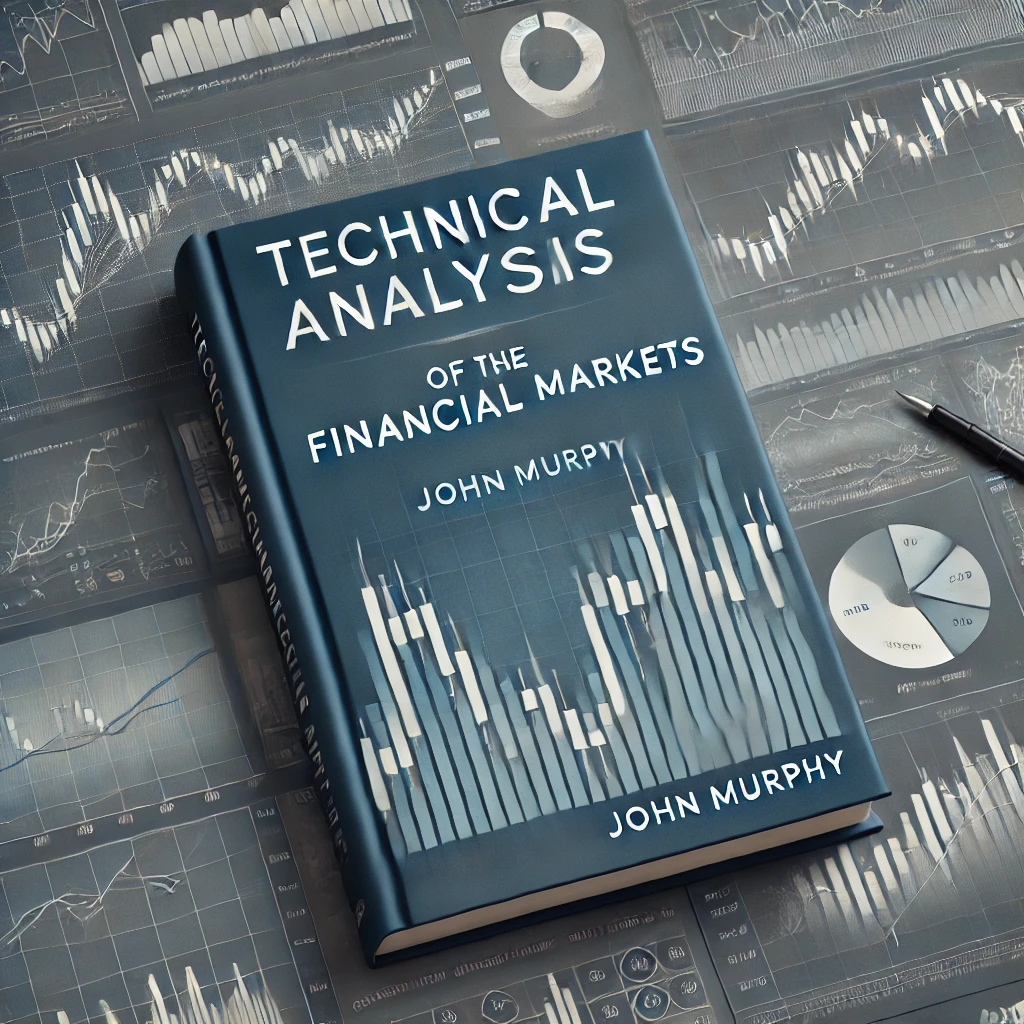“Technical Analysis of the Financial Markets” by John Murphy is a comprehensive resource that has become a cornerstone in the field of technical analysis for traders and investors alike. First published in 1999, this book is often regarded as the “Bible” of technical analysis, providing in-depth insights into various analytical techniques for studying price action, trends, and chart patterns. Murphy’s approach makes it an invaluable tool for anyone interested in understanding market dynamics and applying technical analysis to make informed trading decisions.
Key Concepts in “Technical Analysis of the Financial Markets”
One of the defining features of Murphy’s book is its structured approach to technical analysis, making complex concepts accessible for both beginners and experienced traders. The book covers a wide range of topics, from fundamental technical analysis principles to advanced strategies, including:

- Market Structure and Dow Theory: Murphy introduces readers to Dow Theory, which serves as the foundation for many technical analysis principles. He explains how Dow Theory interprets market behavior through trends, whether primary, secondary, or minor, and illustrates the importance of trend analysis in market forecasting.
- Charts and Chart Patterns: The book dives into different types of charts, such as bar, line, and candlestick charts, detailing their use and significance. Murphy elaborates on essential chart patterns—like head and shoulders, double tops and bottoms, and triangles—guiding readers on how to recognize these patterns and understand their implications.
- Technical Indicators and Oscillators: A major component of Murphy’s work focuses on various technical indicators, which help traders analyze momentum, volume, and trends. He covers oscillators like the Relative Strength Index (RSI), Moving Average Convergence Divergence (MACD), and Stochastic Oscillator, explaining how these tools can identify overbought and oversold conditions to fine-tune entry and exit points.
- Moving Averages and Trendlines: Murphy breaks down the calculation and interpretation of moving averages, both simple and exponential. He discusses the importance of trendlines and support and resistance levels as critical components in identifying market trends and potential reversal points. By using moving averages alongside trendlines, traders can confirm trends and reduce the noise in price movements.
- Volume Analysis: Volume plays a crucial role in validating price movements. Murphy illustrates how analyzing volume trends can signal the strength of a trend. He explains that increasing volume during a price movement suggests that the trend is likely to continue, whereas diminishing volume may indicate a reversal.
- Fibonacci Retracement and Elliott Wave Theory: Murphy also delves into advanced concepts like Fibonacci retracement levels and Elliott Wave Theory. Fibonacci retracement helps traders identify potential support and resistance levels, while Elliott Wave Theory offers a method to forecast market trends by analyzing wave patterns.
Practical Applications of Technical Analysis by John Murphy
One of the strengths of “Technical Analysis of the Financial Markets” is Murphy’s focus on practical applications. He demonstrates how to use technical tools to anticipate price movements, providing examples from historical data to illustrate effective trading strategies. Murphy emphasizes the role of a disciplined approach, advocating for the use of multiple indicators to confirm trading signals.
The book also touches on various asset classes, including stocks, futures, and commodities, making it applicable across different markets. Murphy includes case studies and visual charts, which help readers see the theory in action, building confidence in applying technical analysis tools to real-world trading scenarios.

Why “Technical Analysis by John Murphy Book” is Essential for Traders
“Technical Analysis by John Murphy Book” remains a must-read for traders for several reasons. Firstly, it provides a well-rounded education in technical analysis, from the basics of chart reading to the subtleties of market psychology. Secondly, it offers clear guidance on setting up a trading plan, emphasizing the importance of risk management and consistent strategy. Finally, Murphy’s ability to simplify complex theories has made technical analysis accessible, allowing traders to create a solid foundation for their analysis and trading activities.
Legacy and Influence of Murphy’s Technical Analysis
John Murphy’s work has left an indelible mark on technical analysis education. Many professional traders, analysts, and financial educators reference his principles, and “Technical Analysis of the Financial Markets” is frequently recommended in financial courses and certifications. His insights into the interplay between price, volume, and sentiment have become foundational in technical analysis, influencing modern-day strategies used by traders globally.
Overall, “Technical Analysis by John Murphy Book” is more than just a manual; it’s an essential guide to understanding market movements and making informed decisions. Whether you’re a novice or an experienced trader, the tools and strategies outlined in Murphy’s book provide a solid framework for building and refining trading skills in today’s dynamic markets.

